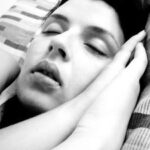Have you ever dreamt that were awakened and were unable to move? It is possible that you weren’t dreaming at all. You could have been suffering from sleep paralysis. Wikipedia states that, “sleep paralysis is a condition characterized by temporary paralysis of the body shortly after waking up (known as hypnopompic paralysis) or, less often, shortly before falling asleep (known as hypnogogic paralysis).
During the REM (Rapid Eye Movement) part of the sleep cycle, the body is in a natural state of paralysis. This is known as REM atonia. When the body awakens during REM sleep, the paralysis sometimes lingers. This is sleep paralysis. While the person is completely aware, they may experience hypnagogic hallucinations with their sleep paralysis. These hallucinations can manifest themselves as random objects or odd occurences. They can be auditory, tactile, visual, or all of the above. The person may even have trouble breathing, and that is why many people believe they are dreaming.
Very little is known about the physiology of sleep paralysis. However, some have suggested that it may be linked to post-synoptic inhibition of the motoe neurons in the pons region of the brain…low levels of melatonin may stop the depolarization current in the nerves, which prevents the stimulation of the muscles, to prevent the body from enacting the dreamt activity (e.g. preventing a sleeper from flailing his legs when dreaming about running).” The condition can last for seconds or minutes before the person completely awakens or drifts back to sleep. When a person returns to sleep, they often experience lucid dreams.
Most people have or will experience sleep paralysis at some point in their lives. However, many of those that have the experience also have narcolepsy. There are also many other factors that have been found to contribute to sleep paralysis. Stress, sleep deprivation, sleeping pills, antihistamines, and hallucinagenic drugs have all been linked to the condition. Studies also show that sleeping on your back or propped up on pillows can induce sleep paralysis episodes.
While these incidents don’t sound particularly bothersome, many people experience frequent extended episodes. If this is the case with you, there are a few treatments you can try. If you are having an attack, try to move your eyes and facial muscles. If you want to prevent an attack, there are two drugs that have been proven effective, Clonazepam and Fluxotene.
Sleep paralysis has been documented for centuries, and has crept into the mythologies of several cultures. In Hungary it is attributed to witches and fairies. Kurds believe that ghosts sit atop the sleeping person to suffocate them. Mexicans have the same belief, and they call it “se me subio el muerto” (the dead person got on me). The Yoruba of Nigeria believe that the condition is the result of a feud between a person and their deceased spouse. In New Guinea, they believe that sleep paralysis is caused by trees that feed on human life. The disorder has also been woven in tales by soem of the greatest writers in literature. Don Quixote, Moby-Dick, The Snows of Kilimanjaro, and The Green Man all use elements of the condition, though some present it from a mythological standpoint.
Sleep paralysis is a well documented disorder that causes partial or full body imobility for a short period of time. While it can effect your sleep, it is important to understand that is doesn’t have to adversely affect your life.





